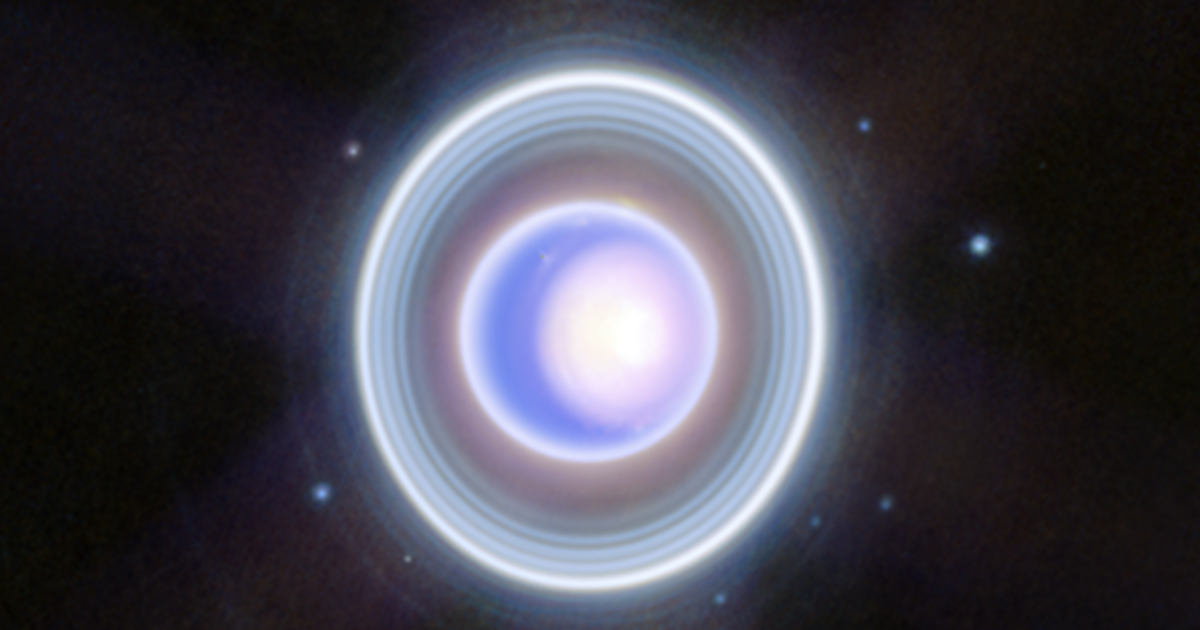One of today's most advanced space telescopes, the James Webb Space Telescope, in addition to looking into the early universe, recently took a look at one of the most unusual and mysterious planets in the solar system, Uranus.
In images taken by Voyager 2 in 1986, Uranus still looked like a simple light blue ball. In contrast, the images taken by Webb this year reveal a picture of a planet rich in atmospheric phenomena.
Image: NASA
Webb's images clearly show Uranus' ring system, along with the relatively difficult-to-capture innermost ring of Zeta, and part of its 27 moons, some of which are hidden between the rings. The most unusual part of the new images is the cloud cover over the poles, where an all-white central area and dark bands of clouds can be seen fading towards the equator.
Uranus is the seventh planet in the solar system, a world rich in water, ammonia, and methane. Its axis of rotation is approximately in the same plane as its orbit, so in the corner opposite the sun there is a day lasting 42 years, while on the other side there is a night lasting 42 years.
Examining Uranus helps identify nearly 2,000 similar-sized exoplanets that have been discovered in recent years — essentially, we see it as an exoplanet hiding in our solar system's backyard, as we learn how it forms and how, for example, the weather works on a celestial body of This caliber.















































